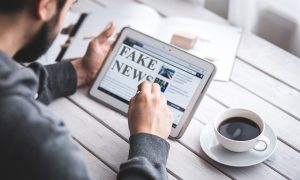The most authoritative quotes come from on-the-record named sources, preferably senior executives, labor leaders, scientists, economists and workers with direct knowledge of the news.
But there will come times in your career when it’s necessary to used unnamed sources in order to bring some of the most important information to light. While one usually thinks of political reporting — “Deep Throat” — the situation arises frequently in business journalism. Here are three key concepts, and I quote from the NYU Journalism Handbook.
1. Background.
“On background” is a kind of limited license to print what the source gives you without using the source’s name. But most veteran reporters will not use “on background” information until they can verify it with other sources. People try to go “on background” when their information is very sensitive, which is to say, the information is likely to cause a stir. “On background” means the source’s name does not appear in the story. In effect it confers anonymity on your source, but allows you to work with the information the source has provided. Again, it’s best to consult your professor in these situations.
2. Off the record.
This restricts the reporter from using the information the source is about to deliver. The information is offered to explain or further a reporter’s understanding of a particular issue or event. (Various presidents have invited reporters to have dinner with the understanding that no information from this meeting can ever be published.) But if the reporter can confirm the information with another source who doesn’t insist on speaking off the record (whether that means he agreed to talking on the record, on background, or not for attribution) he can publish it.
3. Not for attribution.
A reporter agrees not to identify a source by name. Identification is provided only by reference to the source’s job or position. That identification must be agreed upon by the reporter and the source, and is almost always given in a way that prevents readers from discovering the source’s specific identity. (There are rare exceptions — when dealing with diplomats and expressing a nation’s official views, for instance.) The reporter should make sure the attribution is accurate and should press the source to allow the attribution to be as specific as possible. For example, a reporter would want to attribute information to “a high-ranking official in the Justice Department,” rather than “a high-ranking law enforcement official,” if the source agrees beforehand.
“With stories where an unnamed source
discusses individuals, be especially
careful about liable and, with
genuinely private citizens,
invasion of privacy.”
The trouble is that these phrases are often confused, even by veteran journalists. So get them straight. And explain each to your source and agree on which it is to be. Experienced, high-level sources are accustomed to this. For example, I recall a “not for attribution” briefing I received from a Treasury secretary once. All I had to do was ask him how he wanted to be identified (“a high-ranking administration source”). But in most cases, you will need to make the ground rules clear.
Always try to get a source on the record. If you can’t, make sure you know your new organization’s rules for handling off-record sourcing. Often an editor will want to know who the source is.
Be skeptical of people who don’t want their names used. They may merely be afraid or unauthorized to speak on a matter. But some — think of a terminated employee — may have an axe to grind.
Be aware of legal ramifications. What you write can move a company’s stock price or affect its reputation. This can bring, in some cases, legal exposure; this is when a story should be “lawyered.” With stories where an unnamed source discusses individuals, be especially careful about liable and, with genuinely private citizens, invasion of privacy. Obviously you are not bound by any promise if the individual proves to have committed a crime, but this should also be discussed with editors and lawyers.
Always try to find corroboration and other sources to back up what you write, especially the explosive stuff.
And it is useful to tell the reader why you are granting the unnamed source this privilege. The New York Times is especially rigorous about this, even if it says, “because this individual was not authorized to discuss the deal” or whatever.
There’s a school of thought that news organizations should never use unnamed sources. This is naive. Most of the important news you report will require some use of unnamed sources.
And we never give up the identity of sources, aside from the criminal exception listed above — and even this must be weighed carefully in an age of the national security state and its overreach. Be prepared to go to jail of necessary. It is one of the risks of our calling.










